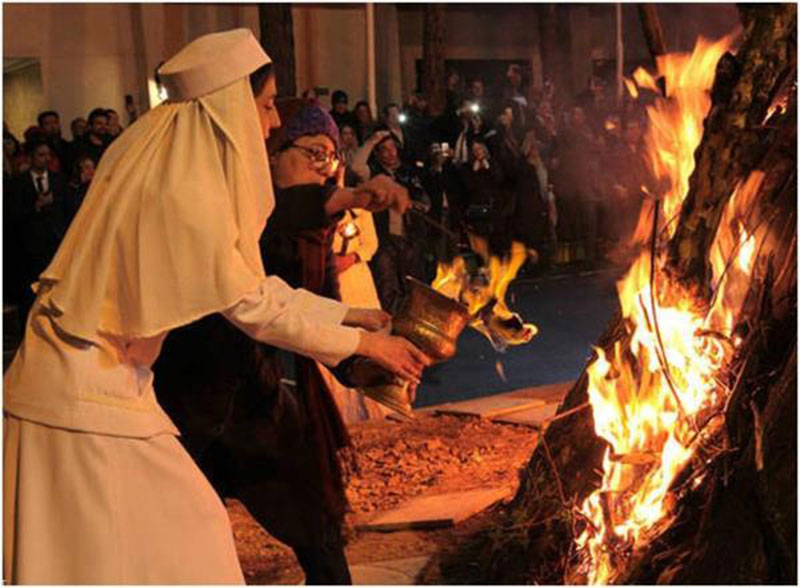Azargan festival is one of the twelve festivals of the year and one of the fire festivals, which is held in praise of Izad Azar (the god of all fires) in Azar day of Azar month.
Azargan festival, which is the third day of Azar in the solar calendar and the official calendar of the country, is held in Azar symmetry on the day of Azar; When the month and day are the same. People used to go to fire temples on this day; After praying to the door of Ahuramazda and celebrating and being happy, they would bring an ember of the holy fire home with them as a sign of blessing and take care of it until the end of the cold season so that it does not go out. In the eyes of ancient Iranians, fire was considered the first and most important element of life, and water was second in importance. An element that gave light, warmth and brightness to the world and was guarded by Izad Azar. Therefore, Iranians had celebrations called the Fire Festival, and Azargan was considered one of these celebrations. In the following, you will learn more about the story of the discovery of fire in the Shahnameh, the philosophy of the origin of this celebration and its customs.
Everything you need to know about Azargan festival:
What is Azargan festival?
Azargan, Azarjashen or according to some sources “Azarakhsh” is one of the twelve festivals of the year. Iranians honored and celebrated whenever the name of the day and month were equal. Therefore, they had a celebration in the year 12, which is known as monthly celebrations.
Photo source: talab.org; Name of the photographer: unknown
From this passage, the ninth day of the ninth month, Azar, when the day and the month agreed, was called Azargan or Adorgan, and they spent this day lighting fires, celebrating and stomping. Abu Rihan al-Biruni also introduces Azargan in the book “Atar al-Baqiyya” as follows:
The 9th day of Azar is an Eid that is called Azarjashen on the occasion of the agreement of two people, and on this day they need to light fire, and this day is the celebration of fire, and it is named after the angel who is responsible for all fires. Zoroaster ordered to visit the fire temples on this day. and consult in the affairs of the world.
Since the weather gets colder in this month and people’s need for fire increases, Azar is known as the month of fire.
The ancient ritual of Azargan was one of the important and beautiful festivals of ancient Iran, which is still celebrated in some cities of Iran and among the followers of Zoroastrian Prophet. Atar or Atarsh in Avesta, Ator or Atakhsh in Pahlavi and Azar in Persian are all the same as fire, and since the weather gets colder in this month and people’s need for fire increases, Azar is considered the month of fire.
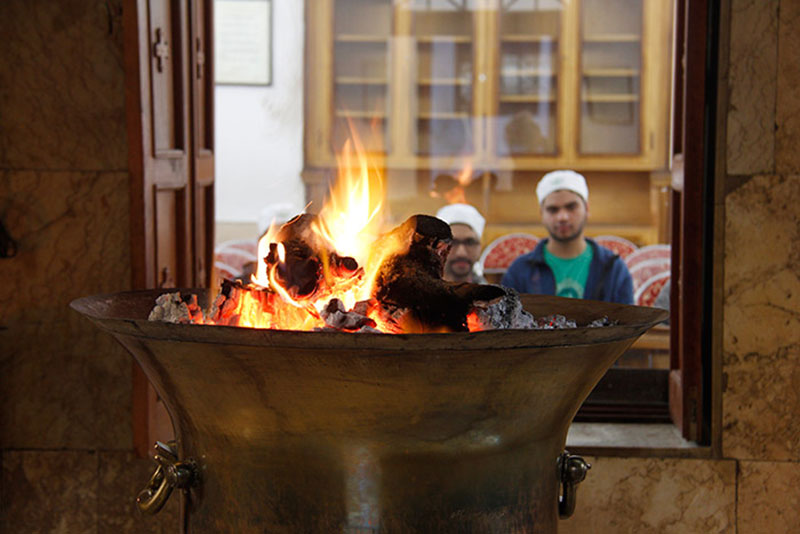
Photo source: Bersad; Name of the photographer: unknown
The ancestors of this land attached great value and importance to fire as one of the four elements of life. They considered fire to be the manifestation of God’s existence and used every possible means to praise and glorify it; Because light, fire, light, and the sun were all manifestations of growth and life. A manifestation that, with its power, destroyed all the effects of evil, filth, disease, ugliness, and everything that was attributed to the devil.
From the oldest periods of history, the worship of Su or Qibla of ancient Iranians was towards light and illumination. Therefore, performing religious ceremonies, praying and worshiping the Lord was done inside the temples towards the burning fire and outside the fire temples, towards the sun, moon or any other light. The suspicion of fire worship of Iranians happened for this reason, even though they considered fire as a sign of Ahura Mazda’s brightness and his life force. This is the reason why Zoroastrians consider the songs of praise of fire and the sun in the late Avesta to be among the usual and important prayers.
The people of ancient Iran considered Azar to be the god of all fires and compared to other elements, they paid special respect to it and dedicated the ninth day of Azar to this god.
On the other hand, the people of ancient Iran considered Azar to be the god of all fires and compared to other elements (Akhshijs), they paid special respect to it and dedicated the ninth day of Azar to this god.
In their belief, the light of the fire is a sign of Ahura’s Azar, which illuminates the hearts and souls of the companions of Ahura Mazda, and its presence in the body of other phenomena of existence makes the warmth of life flow. Therefore, fire is considered as “the direction of worship” of Ahura Mazda, and fire worshipers take care of it in fire temples.
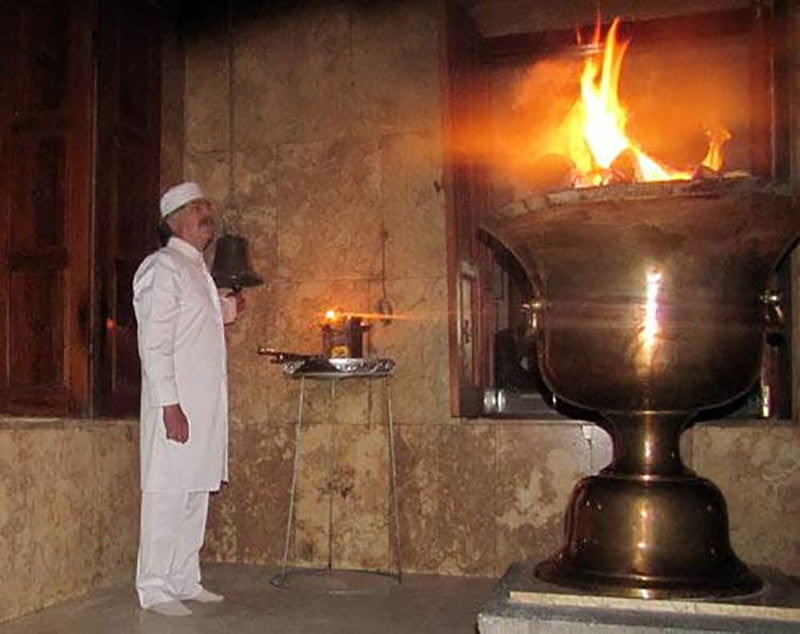
Photo source: Marwar News; Name of the photographer: unknown
Many ancient texts have also mentioned Azar Ahurai and considered its position to be praiseworthy. For example, it is stated in “Fire Prayer”:
Peace be upon you fire! Ahura Mazda, the most praiseworthy creature…
To you fire! O beam of Ahuramazda! Praise be to the creator and his creatures! Be hot in this house! Be constantly lit in this house! Be bright in this house! Stay in this house until late!
Give me a favor, O fire! O beam of Ahuramazda! Easy comfort! Easy shelter! A lot of comfort! Wisdom, extravagance, eloquence of language and smooth alertness, followed by great and good wisdom and harmlessness, followed by masculine courage, steadfastness, vigilance and alertness, progeny and hard-working children, countrymanship and community of votes, brave, good deed, liberating and Gentlemen, to make my house, my ten, my city and my country prosperous and promote the fraternity of countries and global solidarity.
In the customs of Azargan festival, it is mentioned that people used to go to fire temples and pray and give their vows on this day. According to the ancient ceremony and for the sake of sanctity and respect, every family would take an ember from the sacred fire of the temple and light the winter fire needed in the house with that flame. It is said that there was a place of prayer in every house, where the fire was always burning in its hearth. If this fire was extinguished due to carelessness, it was a sign of bad omen, and the prayer phrase “Do not let the stove of your house go out” has its roots in this ancient ritual.
What day is Azargan festival?
Azargan festival, as mentioned, is one of the monthly festivals of ancient Iran, which is held on the day and month of Azar. This day in the Yazdgerdi calendar (Zoroastrian calendar) is the ninth day of Azar, in other words, Azar is the day of the month of Azar, when the day and the month agree.
In the solar calendar and the official calendar of the country, the 3rd of Azar is dedicated to the Azargan festival, which coincides with the day of Azar from the month of Azar in the Zoroastrian calendar.
The reason for this difference of 6 days in the new and old calendars is related to the difference in the number of days in the year in the past and today. In the old calendar, everyone considered the 12 months of the year as 30 days; But the order of the days in the solar Hijri calendar is different and the first 6 months of the year have 31 days and the second 6 months have 30 days. Therefore, Azargan festival, like the other twelve festivals of the year, is delayed by 6 days and is held on the third day of Azar.
Azargan celebration in Shahnameh
Attention to fire as a sacred element in creation is very visible in Persian literature. This approach existed even after the Sassanid era in a special way in the literature of Iran, and despite the decline of Mehrism and distance from the religion of Prophet Zoroastrianism, Atash or Izad Azar was still respected and praised by Iranians.
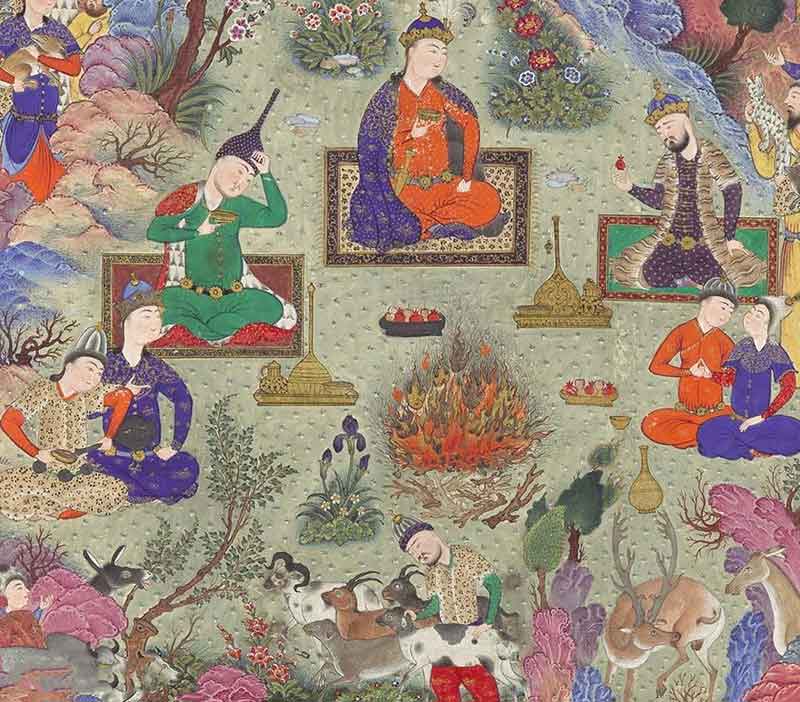
Photo source: Ertang site; Photographer: Unknown
Maulana Jalal al-Din mentions in the beginning of the first book of Masnavi Manavi:
This call is fire and not wind
Whoever does not have this fire is not wind
The fire of love is a reed
It boils down to love
And in another place from the same office he says:
If the fire of nature makes you sad
Do not burn because of Malik Din
Fire of nature if it gives happiness
Andrew Shadi Malik Din Nahd
Wind, earth, water and fire are slaves
With you and me, the dead are rightfully alive
The right of fire is always in rebellion
He loves Pichan constantly day and night
Masoud Saad Salman, a famous writer and poet of the 5th and 6th centuries of AH, wrote the following song about the month of Azar and Azarjashen:
O month, the month of Azar has arrived
Get up and give me Cho Azar
Fire Azar and enjoy your home
Zaazer Sanma for the month of Azar
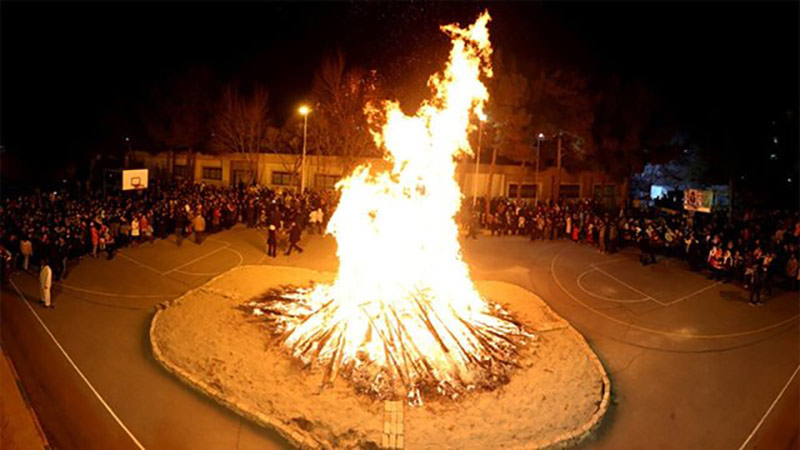
Photo source: ISNA; Name of the photographer: unknown
Before that, however, Ferdowsi Toosi, the famous poet of Iranzmin, in his epic and lasting work Shahnameh, spoke about the ancient Iranians’ belief in fire and pointed to the origin of this vital element. With the explanation that in some old sources such as “Laght Fars Asadi” we come across more verses of Ferdowsi about this, which are not found in today’s editions. Therefore, some people are of the opinion that this part of the Shahnameh is an addendum and they attribute these verses to Ferdowsi; Because it is close to Ferdowsi’s way of speaking:
Nia was the same religion and religion
Worshiping Yazidi was more
Do not say that they are fire worshippers
Be a pure worshiper of Yazdan
Say that you were a beautiful fire
Cho Mer Tazian, right of the stone altar
He ran to the stone inside the fire
Because he spread light in the world
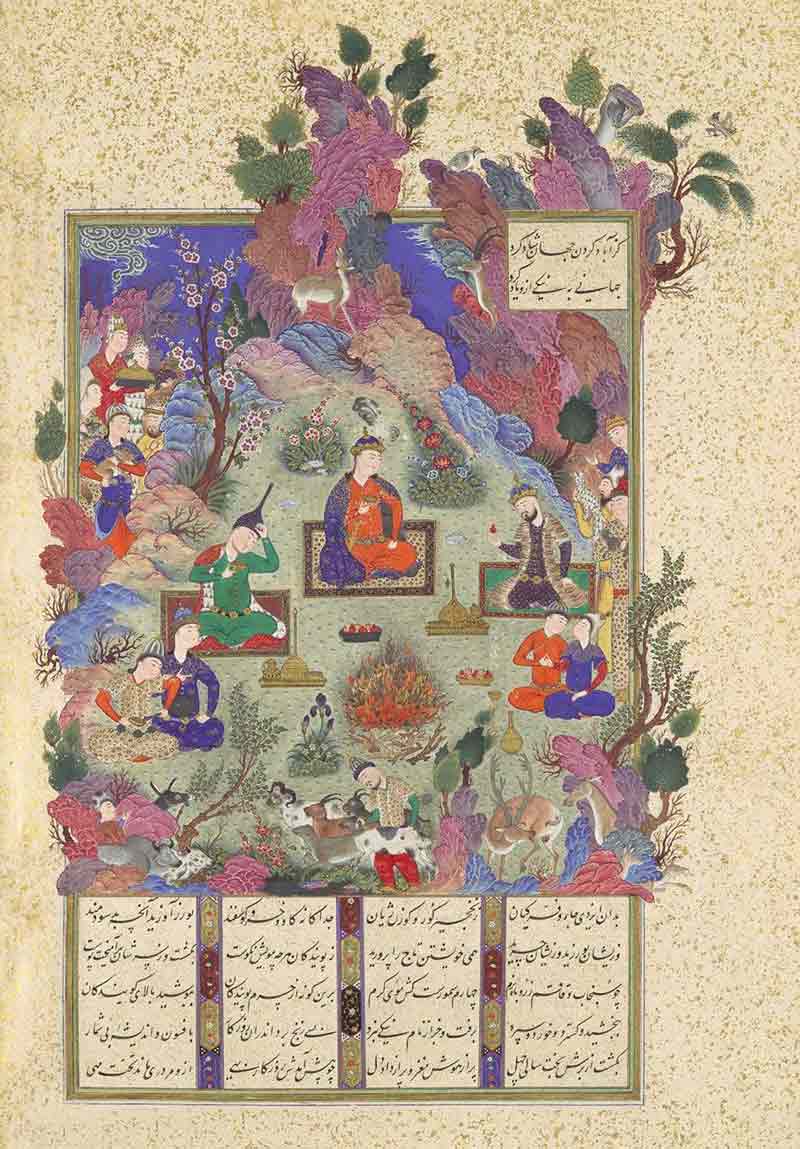
Photo source: Ertang site; Photographer: Unknown
The epic narrative of Hakim Tous continues with the discovery of fire and the establishment of the Sedeh festival, which some people refer to as the fire festival. A discovery that made urbanization, industry and civilization possible and expanded. Ferdowsi attributes this discovery to Hushang, the first king of Pishdadi dynasty:
Jahandar Hoshang voted
Instead of Nia, he put a crown on his head
Stop cutting the wheel of 40 years
Full of brain intelligence and full of heart
Cho sat down on the hazy seat
He said so on the throne
I am the king of seven countries
Jahandar, victorious and ruler
By the command of Yazdan Purozgar
I braced myself for the noise
Wazan then settled the world completely
Everyone on the gate was full of shouts
The first one got the gem
He separated stone from iron with fire
It is a source of iron
Kazan Sang Khara dragged him out
He learned to be a blacksmith
Boar and ax saw and axed
Nia was the same religion and religion
Worshiping Yazidi was more
Say that you were a beautiful fire
Cho Mer Tazian, right of the stone altar
He ran to the stone inside the fire
Because he spread light in the world
Hoshang Pishdadi was a person who, in addition to discovering fire, iron extraction, farming methods, planting trees, digging kariz or aqueducts, herding, expansion of urbanization and many other works are attributed to him.
In Ferdowsi’s narration, one day Houshang was passing through the mountain with his companions; He sees a black snake on the mountainside and throws a stone at him. The snake ran away and the stone hit the mountain, and as a result of the collision of the stones, a spark was created and fire appeared. At night, they lit fire and celebrated this blessed event, and thus the celebration or fire festivals were born.
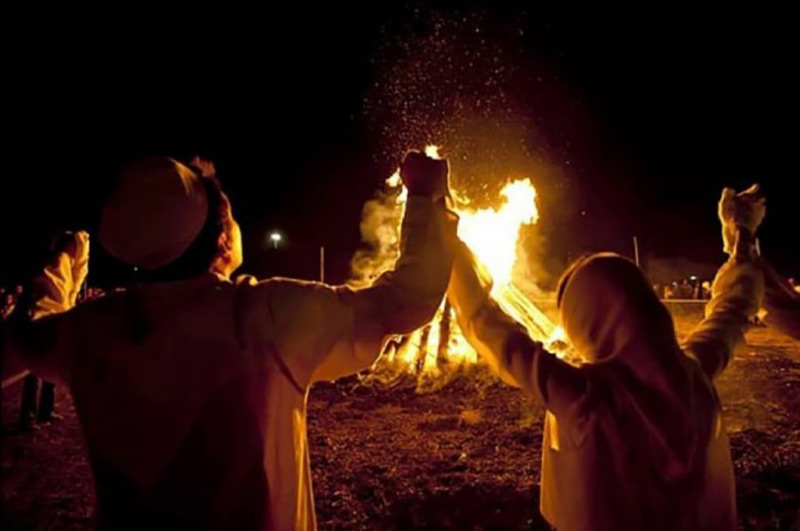
Photo source: Dargarm; Name of the photographer: unknown
In the Shahnameh (in the Hoshang Kingdom section), the story of the discovery of fire is mentioned as follows:
One day, Shah Jahan went to the mountain
Passed with several people in the group
Something long appeared from a distance
Black and dark and sharp
Two eyes from Chu’s head, two fountains of blood
From the smoke of his mouth, the world is dark
He kept smart and stone
He grabbed a stone and sharpened his harp
Let go of Kiani’s force
Jahansoz, the snake is a seeker of the world
He went to the expensive stone and the small stone
The same stone is broken round
A light appeared from both stones
The heart of the stone came from Forough Azarang
The snake was not killed, but because of the secret
From this nature, the stone of fire came out
Jahandar before the creator of the world
He prayed and recited well
Foroughi gave him such a gift
This fire then placed the Qiblah
He said that this Yazidi is Foroughi
You must worship if you buy
The night came to light the fire of Cho Kuh
The same king around him with the group
Someone celebrated that night and got drunk
The name of that festival was auspicious
Z Hoshang remained a memory of this century
It is enough because he is another Shahriar
Making the world happy
The world remembered him well
In addition to this narration, Ferdowsi mentioned fire or fire celebration in several other places of Shahnameh and talked about fire temples. In the beginning of Shahnameh book, the poet talks about the importance of fire and its superiority over other elements:
You should know right from the beginning
The essence of Gohran from the beginning
Yazdan created a small thing
Know the ability of the flour to rise
The essence of these four gems
Painless and timeless
One is a bright fire
Between the water and the wind from the darkness of the soil
Do not raise the ground
The central one was dark and black
The star surprised him
It added brightness to the soil inside
Hemi rose, fire descended, water descended
He went around the sun
Garden with several types of trees
Their heads came down from luck
Azargan festival in fire temples of Iran
Some of the fire temples that continue to celebrate Azargan are:
- The shrine of Shah Mehrayzd in Kerman: This place is located in the north of the city of Kerman and is also known as Bodagh Abad Garden.
- Varahram Fire Temple (Bahram) in Yazd: This fire temple is located in Ayatollah Kashani Street, in the city of Yazd, in the alley of fire fire, and it is open from 3:00 pm to sunset in the winter season.
Photo sources: Amrdad News, Bersad, the best; Photographers name: Homayoun Mehrzad, unknown
Azargan festival customs and traditions
If it came earlier, the ancestors of Iran considered the 9th day of Azar, which was the same as the month of Azar, as auspicious due to other symmetry and introduced that day as Eid. Azar, the day of Azar month, was called Azargan festival, which is also written in sources as Azarjashan and Azarakhsh.
This celebration is one of the fire festivals and it is held at a time when it is close to winter and cold season and people need to light the fire in their homes. Iranians honored Azargan as Nowruz and Mehrgan and considered it blessed and blessed. The fire temples were decorated and decorated on this day, and then by lighting the fire, they held a special ceremony for the celebration.
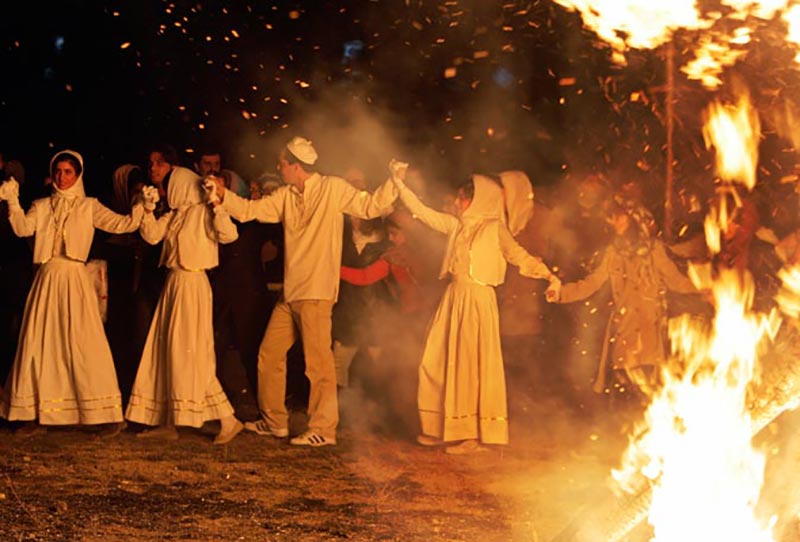
Photo credit: Dawn; Name of the photographer: unknown
In the meantime, there are some sources that consider Azargan or Azarjashen to be the same as the Shahrivargan festival, which is a special fire festival. Abu Rihan Baruni narrates:
Zadovie said that this day is called Azarjashen and this day is an Eid for the fires that are in people’s houses, and this Eid was the beginning of winter in the olden days, and on this Eid, big fires were lit in the houses and they praised and prayed to God more than before and with They would happily gather to eat and light the fire, which they said would take away the cold and dryness of winter, and they believed that the heat of the fire would destroy things that are harmful to plants.
Ancient Iranians used to honor this day very much and by lighting fire in their houses and roofs and praying to the God of light, they would celebrate and celebrate. Fire temples were decorated for this day, and as in most Iranian celebrations, they prepared a table of various foods and drinks.
Among the other customs of Azargan festival is the special prayer for Azar Rooz, which is the fifth prayer of the five minor prayers of Avesta. As mentioned earlier, this prayer is called “fire prayer” and it is recited in praise of Azar Ahurai during Azar festival:
Pure praise be to you, O pure fire of the house, O the greatest benefactor of Ahura Mazda, O the one who burns in praise, I praise you, who has ignited in my house, you are worthy of praise and prayers… I stand before you for prayers with all religions ; I will touch in one hand and in the other hand a dry fragrant stick whose tongue is bright and its burning will spread the sweet smell, and you, worthy of praise, will benefit from its brilliance when it burns and its sweet smell.
You, the god who is closest to Ahura, fulfill our desires and wishes. Align our wishes that come out of the mouth with the Asman site tab to become Kamiyar. Bring us peace and comfort, comfort in life, abundance in sustenance, purity and steadfastness in religion, expressive speech and pleasant voice, and after that knowledge, knowledge that will lead us to a happy and better life.
O great God, always find us. Give us that which will give us success, that which will give salvation and bring prosperity and well-being. Make us benefit from the best lands where we can build comfortable houses, and let our soul find peace and walk a pure and righteous path.
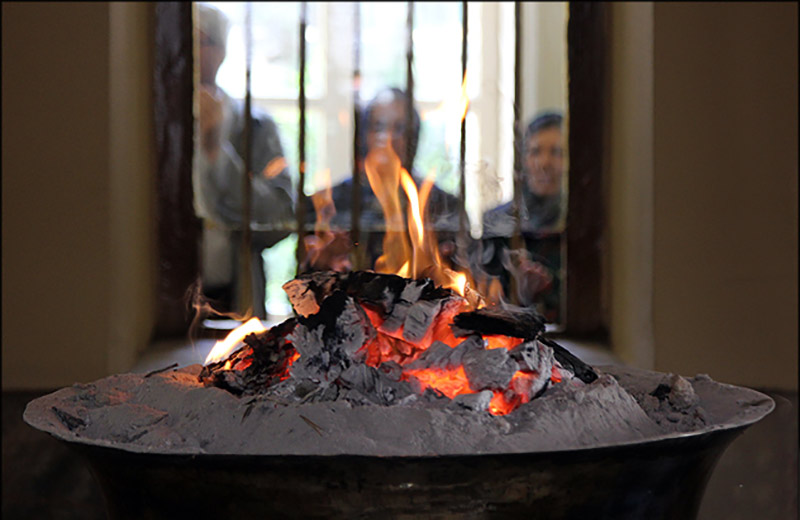
Photo source: Amardad News; Name of the photographer: Homayoun Mehrzad
The ancestors of this land used to put pecans, frankincense and sweet-smelling woods on the fire during the Azargan festival. Then, on the occasion of the beginning of the cold season and as mentioned, each of the people present in the celebration takes an ember to his home from this burning fire in the hearth. They considered this fire very auspicious and auspicious and kept it lit in the house until the end of the winter season and did not allow it to go out. Because this flame was considered holy and considered auspicious, good and blessed.
Offering offerings and gifts to the fire temples, such as fragrant wood that was put on the fire, was one of the special customs of the Azar festival. People believed in the cleanliness of the house on this day and considered things such as wearing white clothes, picking nails and shaving the head to be good. In addition, they believed that consultation and consultation about various issues and problems that have arisen, especially on this day, will achieve the desired result.
Today, unfortunately, Azargan, like other various Iranian festivals, has been forgotten and is celebrated only by a group of Zoroastrians in some cities such as Tehran, Kerman, Isfahan, Shiraz and Yazd. Zoroastrian compatriots go to temples and fire temples and commemorate this day by reciting parts of the Avesta by Mobad.

Photo source: Bersad; Name of the photographer: unknown
In the end, review the celebration of Azargan in these simple verses:
It has appeared since Gitti became
With the help of Ahura the guardian
And Iranians became happy
So good and bad are sitting together
You were sent from Yazdan
To clean Iran from the court
Burn all the darkness and pain
To the heavenly oven, superman
You were the old guide
The same “Viraf” religious and persevering man
You showed that attitude and behavior
You scare the wicked “Zahak”.
You were the companion of Amshaspandan.
To “Goshtasep” that Shah of Iran
To be aware of Zoroastrian religion
Let everything be clear
to the day and month of Azar from the past
that tears and sadness are broken
The celebration of “Azergan” Javed was established
To every fire temple with passion and hope
Everywhere in Sepand, a pure country
For God “Azar” in this soil
Thank you and well done people
A fire started with my chest
Emperors, farmers, teachers
Yalan, clean men, women of Iran
Everyone is happy during Farrokh’s celebration
In this area, what is the king, the horse, and what is the face
To the “Yashtha” section in Nesk Javid
in which it will rain
Prayer is for our God
The same “Azar” that burns what is wrong
Kanon E-Pour Iran is a round girl
You will find victory in this game
Come, this wood, this field, and this sphere
In fact, every time hemi poi
In this late autumn cold
And the leadership is cold blooded
Remember that warm “Azar” happily
May all the hardships before you become soft
From friends, colleagues and relatives
Thanks to “Azer” and Yazdan and Iran
Azargan festival flower
Azarion flower has been introduced as a symbol of Azargan celebration and it seems to be a large round flower with black center and yellow petals. In the part of the book “Bandesh” that talks about the nature of plants, “Azerion” is introduced as the special flower of Azar among the flowers and it is stated:
“… also say that every flower belongs to Amshaspandi; And may he say: Azarion Azar…
In ancient Persian texts, Azarion flower has been introduced with other names such as “Azergun”, “Fiery flower” or “Fiery flower”. In their poems, Saeb, Vaez Qazvini and Amir Moazi introduced Azarion as a fiery red flower and said that although it is red, it is not a red flower and it is not fragrant.
In the dictionary of Dehkhoda, under the words Azaryun and Azargun, it is written as follows:
It is a yellow flower that has black roots among the fluff and fluff, and it does not smell good, and Iranians like to see it and scatter it at home (from the dictionary). As it was said in Azargun, Azaryon is the Arabic form of Azargun, and the words of cultural writers, such as poets, are extremely different and anxious in its meaning, and they call it Khairy, a type of chamomile, and a type of chamomile, and a type of chrysanthemum. And they said the like.
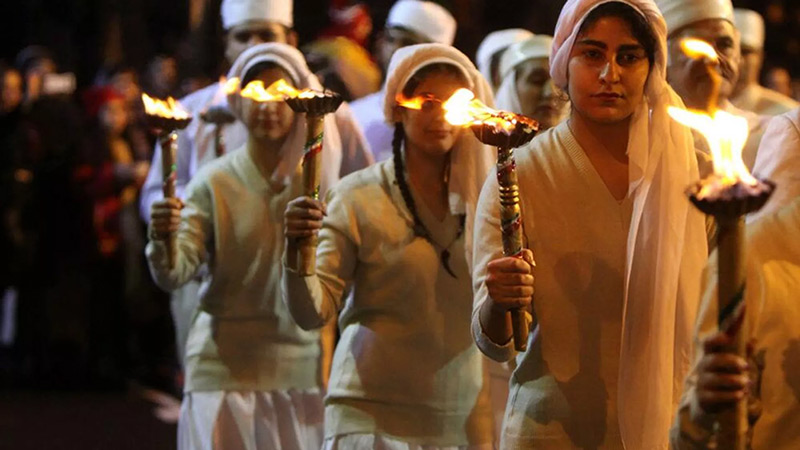
Photo source: spnfa.ir; Name of the photographer: unknown
In this article, a brief introduction of Azargan festival and its special rituals were discussed. In completing these materials, your knowledge and knowledge, dear and educated audience of Kojaro, will be very useful and valuable. In this regard, we look forward to your views and valuable comments.
cover photo source: adyanet; Name of the photographer: unknown
Frequently asked questions
What is Azargan festival?
Azargan, Azarjashen or “Azerakhsh” is one of the twelve festivals of the year. Ancient Iranians honored and celebrated whenever the name of the day and the month were equal.
What day is Azargan festival?
Azargan festival in the Yazdgerdi calendar (Zoroastrian calendar) is the ninth day of Azar, in other words, Azar is the day of the month of Azar, when the day and the month agree with each other. In the official calendar of the country, the 3rd of Azar is dedicated to Azargan festival.
RCO NEWS




